Microwave assisted drug delivery of titanium dioxide/rose Bengal conjugated chitosan nanoparticles for micro-photodynamic skin cancer treatment in vitro and in vivo
- PMID: 40389852
- PMCID: PMC12090424
- DOI: 10.1186/s12885-025-14285-8
Microwave assisted drug delivery of titanium dioxide/rose Bengal conjugated chitosan nanoparticles for micro-photodynamic skin cancer treatment in vitro and in vivo
Abstract
Background: Micro-photodynamic therapy (MWPDT) combines photo-dynamic (PDT) and microwave-dynamic (MWDT) therapies with sensitizers, offers new avenues for cancer treatment. Despite the fact that novel sensitizers for MWPDT have been successfully synthesized, only a few are being employed effectively. The low tumor-targeting specificity, inability to transport sensitizer's deeper intratumorally, and deteriorating tumor microenvironment all restrict their anti-tumor efficacy. The current work was done aiming at microwave assisted drug delivery of titanium dioxide / rose Bengal conjugated chitosan nanoparticles (TiO2/RB@CSNP) for micro- photo-dynamic skin cancer (SKCA) treatment in vitro and in vivo as activated cancer treatment up-to-date modality.
Materials and methods: The study was conducted in vitro on human SKCA cells (A-375) and the study protocol application groups in vivo on Swiss albino mice treated with 7,12-dimethylbenz[a]anthracene (DMBA)/croton oil only and were not received any treatment for inducing SKCA, and only after SKCA induction the study treatment protocol began, treatment was daily with TiO2/RB@CSNP as MWPDT sensitizer with or without exposure to laser (IRL) or microwave (MW) or a combination of them for 3 min for two weeks.
Results: Revealed that CSNP can be employed as effective TiO2/RB delivery system that directly targets SKCA cells. Additionally TiO2/RB@CSNP is a promising MWPS for and when combined with MWPDT can be very effective in treatment of SKCA-A-375 in vitro (cell viability decreased in a dose-dependent basis, the cell cycle progression in G0/G1 was slowed down, and cell death was induced as evidenced by an increase in the population of Pre-G cells, an increase in early and late apoptosis and necrosis, and an increase in autophagic cell death) and DMBA/croton oil SKCA-induce mice in vivo (induced antiproliferative genes (caspase 3,9, p53, Bax, TNFalpha), suppressed antiapoptotic and antiangiogenic genes (Bcl2,VEGF respectively) effectively reducing the tumors growth and leading to cancer cell death as well as decreased oxidative stress (MDA), and ameliorated enzymatic and non-enzymatic antioxidants (SOD, GR, GPx, GST, CAT, GSH, TAC) as well as renal (urea, creatinine) and hepatic (ALT, AST) functions. This process could be attributed to MWPDT; microwave and/or photo-chemical TiO2/RB activation mechanism and antioxidant potential of non activated TiO2/RB as well.
Conclusion: The results indicate that TiO2/RB@CSNP has great promise as an innovative, effective delivery system for selective localized treatment of skin cancer that is activated by MWPDT.
Keywords: Chitosan nanoparticle; Micro-photodynamic; Rose Bengal; Skin cancer; Titanium dioxide.
© 2025. The Author(s).
Conflict of interest statement
Declarations. Ethics approval and consent to participate: Experimental procedures, animal handing and sampling followed the Guide for the Care and Use of Laboratory Animals and were approved by Research Ethical Committee [Institutional Animal Care and Use Committee, (ALEXU-IACUC; Code No.01219112821)] of the Medical Research Institute, Alexandria University (Alexandria, Egypt). Consent for publication: Not Applicable. Competing interests: The authors declare no competing interests.
Figures
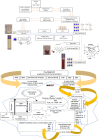

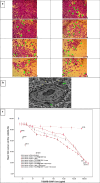


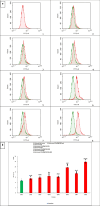
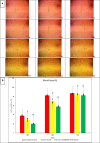
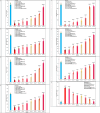
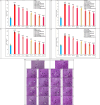

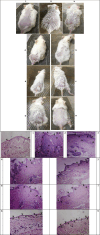
Similar articles
-
Pulsed cavitation ultrasound assisted delivery of cardamom, pistacia and laurel encapsulated micelles nanoparticles for sono-photodynamic lymphoma in vitro and in vivo treatment.Lasers Med Sci. 2025 Mar 24;40(1):156. doi: 10.1007/s10103-025-04387-x. Lasers Med Sci. 2025. PMID: 40126665 Free PMC article.
-
Magnetic and pH dual-responsive mesoporous silica nanocomposites for effective and low-toxic photodynamic therapy.Int J Nanomedicine. 2017 Apr 10;12:2733-2748. doi: 10.2147/IJN.S127528. eCollection 2017. Int J Nanomedicine. 2017. PMID: 28442903 Free PMC article.
-
Improving Dermal Delivery of Rose Bengal by Deformable Lipid Nanovesicles for Topical Treatment of Melanoma.Mol Pharm. 2021 Nov 1;18(11):4046-4057. doi: 10.1021/acs.molpharmaceut.1c00468. Epub 2021 Sep 23. Mol Pharm. 2021. PMID: 34554752 Free PMC article.
-
An efficient rose bengal based nanoplatform for photodynamic therapy.Chemistry. 2014 Aug 25;20(35):10921-5. doi: 10.1002/chem.201404296. Epub 2014 Aug 12. Chemistry. 2014. PMID: 25116185
-
Biomedical Applications of Photo- and Sono-Activated Rose Bengal: A Review.Photobiomodul Photomed Laser Surg. 2019 Jul;37(7):383-394. doi: 10.1089/photob.2018.4604. Epub 2019 Jun 10. Photobiomodul Photomed Laser Surg. 2019. PMID: 31180251 Review.
References
-
- Leiter U, Keim U, Garbe C. Epidemiology of skin cancer: update 2019. Adv Exp Med Biol. 2020;1268:123–39. - PubMed
-
- Sung H, Ferlay J, Siegel RL, Laversanne M, Soerjomataram I, Jemal A, et al. Global Cancer Statistics 2020: GLOBOCAN estimates of incidence and mortality worldwide for 36 cancers in 185 countries. CA Cancer J Clin. 2021;71:209–49. - PubMed
-
- Siegel RL, Miller KD, Fuchs HE, Jemal A. Cancer statistics, 2021. CA Cancer J Clin. 2021;71:7–33. - PubMed
-
- Chandra J, Hasan N, Nasir N, Wahab S, Thanikachalam PV, Sahebkar A, et al. Nanotechnology-empowered strategies in treatment of skin cancer. Environ Res. 2023;235:116649. - PubMed
MeSH terms
Substances
LinkOut - more resources
Full Text Sources
Medical
Research Materials
Miscellaneous

